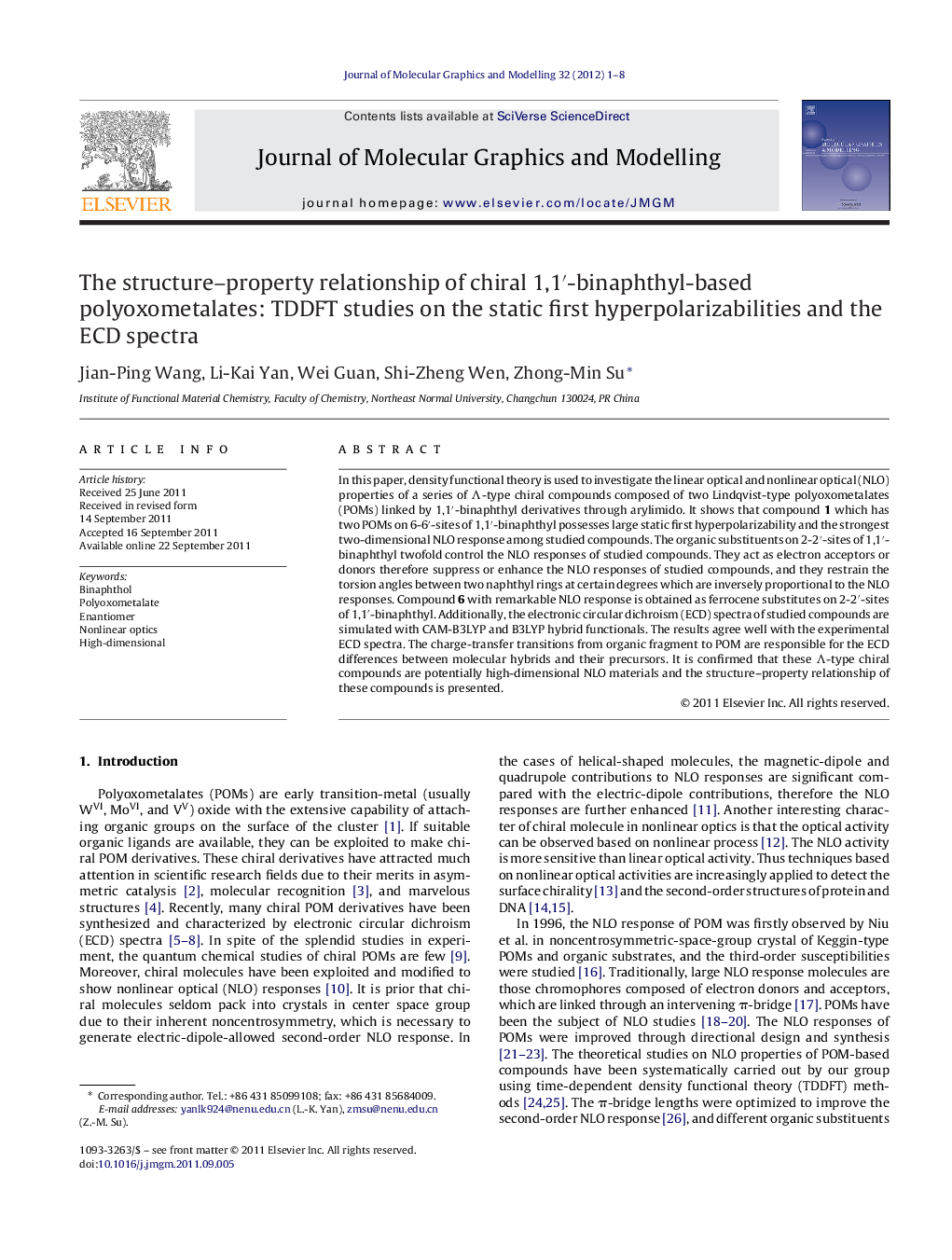| Article ID | Journal | Published Year | Pages | File Type |
|---|---|---|---|---|
| 443691 | Journal of Molecular Graphics and Modelling | 2012 | 8 Pages |
In this paper, density functional theory is used to investigate the linear optical and nonlinear optical (NLO) properties of a series of Λ-type chiral compounds composed of two Lindqvist-type polyoxometalates (POMs) linked by 1,1′-binaphthyl derivatives through arylimido. It shows that compound 1 which has two POMs on 6-6′-sites of 1,1′-binaphthyl possesses large static first hyperpolarizability and the strongest two-dimensional NLO response among studied compounds. The organic substituents on 2-2′-sites of 1,1′-binaphthyl twofold control the NLO responses of studied compounds. They act as electron acceptors or donors therefore suppress or enhance the NLO responses of studied compounds, and they restrain the torsion angles between two naphthyl rings at certain degrees which are inversely proportional to the NLO responses. Compound 6 with remarkable NLO response is obtained as ferrocene substitutes on 2-2′-sites of 1,1′-binaphthyl. Additionally, the electronic circular dichroism (ECD) spectra of studied compounds are simulated with CAM-B3LYP and B3LYP hybrid functionals. The results agree well with the experimental ECD spectra. The charge-transfer transitions from organic fragment to POM are responsible for the ECD differences between molecular hybrids and their precursors. It is confirmed that these Λ-type chiral compounds are potentially high-dimensional NLO materials and the structure–property relationship of these compounds is presented.
Graphical abstractFigure optionsDownload full-size imageDownload high-quality image (195 K)Download as PowerPoint slideHighlights► The structure–property relationship of 1,1′-binaphthyl-hexamolybdate clusters is disclosed by linear and nonlinear optical (NLO) studies. ► These compounds are confirmed to be high-dimensional NLO materials. ► The substituents on 2,2′-sites of 1,1′-binaphthyl two-fold control the second-order NLO responses of these compounds. ► Among them, the ferrocene substituent gives the largest NLO response.
